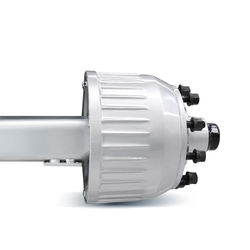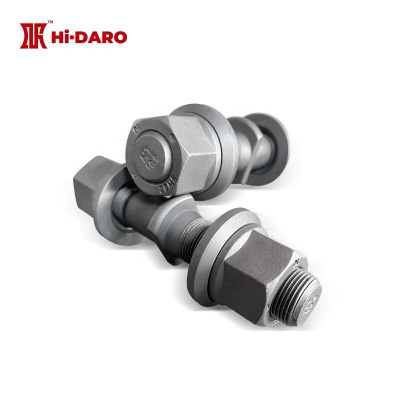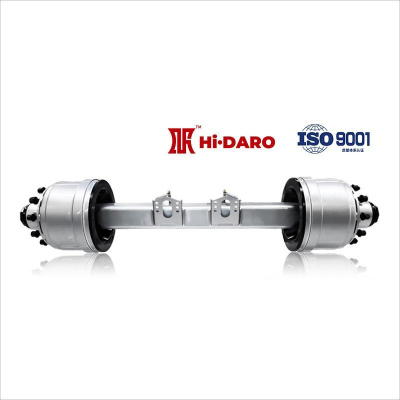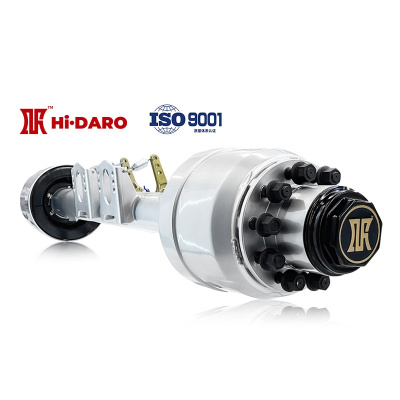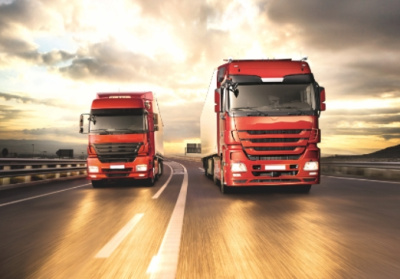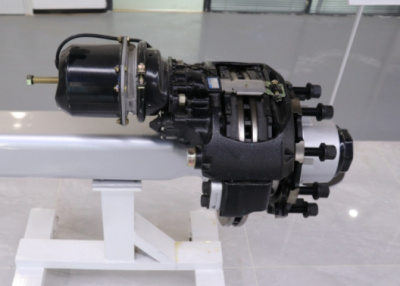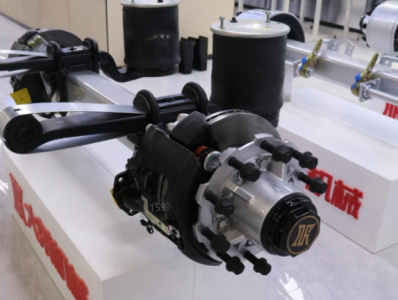Which model is more practical, 6*4+2 or 4*2+3?
According to the regulations of GB1589, the main models of five-axle articulated trailers can be divided into three types: 4*2+3, 6*2+2 and 6*4+2. The most widely used five-axle vehicles are 6*4+2 and 4*2+3.
Among them, 6*4+2 refers to 3-axle tractor (4 driving wheels) + 2-axle semi-trailer, 4*2+3 refers to 2-axle tractor (2 driving wheels) + 3-axle semi-trailer.
According to the high-speed axle-by-axle toll policy, these two models are both five-axle vehicles, and the toll collection standards are the same, both of which are applicable to high-speed long-distance transportation trailer axle.
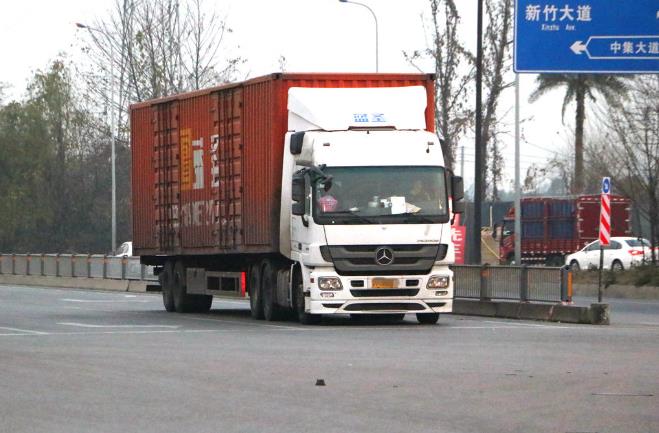
However, in practical applications, there are more or less differences between these two models in terms of fuel consumption, flexibility, chassis configuration, driving experience, driving stability, etc., which also leads to the application fields of these two models There are differences. For example, the super express delivery industry prefers to choose 6*4+2 models, while e-commerce express delivery prefers 4*2+3 models.
The reason is nothing more than the following points:
1. The total mass limit of vehicle + cargo is 4*2+3<6*4+2≈1t
For 4*2+3 models, that is, 4*2 tractor + three-axle semi-trailer, the total weight limit is 42t, and for 6*4+2 models, that is, 6*4 tractor + two-axle semi-trailer, the total weight limit is It is 43t, and the difference between the two is 1t. If it is placed in the field of light cargo, it can accommodate more cargo.
2. Vehicle weight 4*2+3<6*4+2≈1.5t-2t
Judging from the model announcement, when equipped with the same power chain, the curb weight of a 4*2 tractor is about 6t-7t, and that of a 6*4 tractor is about 9t-10t, with a difference of 2t or 3t between the two; the same length The weight difference between a three-axle semi-trailer and a two-axle semi-trailer made of different materials is about 0.5t-1t.
3. Fuel economy 4*2+3<6*4+2≈2-4L/100km
If the two models are also in plain high-speed conditions, the power chain data of the two cars are basically the same. Under this condition, the 4*2 has one less set of driving wheels, transmission shafts and various planetary gear components than the 6*4. The power only needs to be transmitted to a set of drive shafts to drive the vehicle, which obviously consumes less fuel.
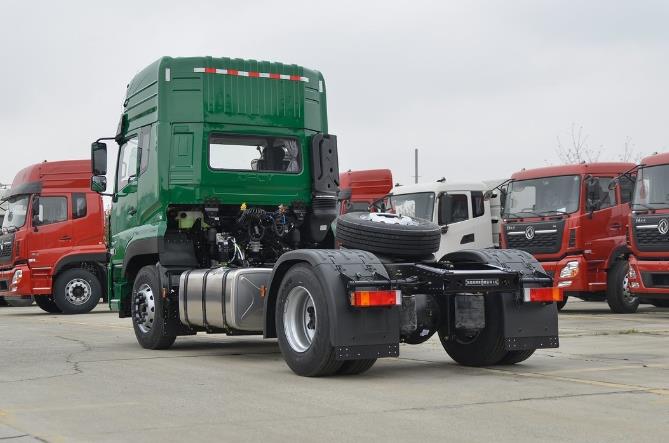
According to some car owners, the difference trailer axle in fuel consumption between the two can reach 2-4L/100km, calculated at 7.3 yuan/L, which is equivalent to saving 14.6-29.2 yuan in fuel for running 100km.
Some car owners may have asked: If a 6*2 tractor is compared with a 4*2, and the number of drive shafts is the same, which one will consume less fuel? The answer is still the 4*2 model, because even if the number of driving wheels is the same, the 6*2 has an extra set of wheels, the contact area between the tire and the road surface will increase, the rolling resistance will increase accordingly, and the fuel consumption will naturally increase, but there is no 4*2 It is so obvious compared with 6*4.
4. Cargo box volume 4*2+3>6*4+2
According to the new version of GB1589, the length limit of five-axle vehicles shall not exceed 17.1m. If the owner wants to pursue a larger loading space, in addition to reducing the height of the cargo compartment and expanding the internal volume of the cargo compartment, he can also choose a tractor with a shorter length , to achieve more design redundancy and obtain a higher square meter. From this perspective, 4*2 has an advantage over 6*2.
5. Operational flexibility 4*2>6*4
According to the feedback from some car owners, 4*2 is more flexible than 6*4, especially in the cargo yard where the cargo yard is close to the platform or the cargo yard is relatively narrow, the 6*4 often needs to make several times more directions than the 4*2 to correct the parking lot. good.
6. Axle load distribution 4*2+3>6*4+2
Compared with the two-axle semi-trailer, the three-axle semi-trailer has one more axle, which means that the weight of the goods that can be carried is higher. Under the premise of the same type of supporting bridge, the weight of the goods is distributed more evenly, which can improve the vehicle to a certain extent. Driving stability.
7. Driving ability 4*2+3<6*4+2
If the road conditions for vehicle transportation involve non-paved roads such as national highways, provincial highways, and even remote mountain roads in addition to high speeds, then the vehicles need to have better driving capabilities. In this case, the advantage of 6*4 is more Obviously, one more set of driving wheels and transmission shafts can better distribute the power of the vehicle, provide stronger driving force, and ensure driving safety.
8. Driving experience 4*2+3<6*4+2
Because the 6*4 tractor is longer, it can better absorb and alleviate the bumps and vibrations from the road to a certain extent, it is more stable at high speeds, the driving experience is better, and the ability to control cargo damage is also more dominant trailer axle.

9. Use flexibility 4*2+3<6*4+2
This point should be distinguished from the flexibility of operation, mainly for logistics enterprises. The 6*4 tractor can not only tow two-axle semi-trailers, but also can be connected with three-axle semi-trailers, which can meet different types and different weights. cargo transportation needs.
Under the current general trend of light weight, many express companies have begun to gradually replace 6*4 with 4*2 according to the differences in transportation routes and operating conditions. Which of these two models is more practical? Still the same sentence, the one that suits your own needs is the best. Car owners should not blindly follow the trend when choosing a car. They should analyze it according to the actual application scenario, comprehensively operating costs, operation and maintenance costs, types of goods, and transportation conditions. , transportation requirements and other conditions comprehensive assessment.
